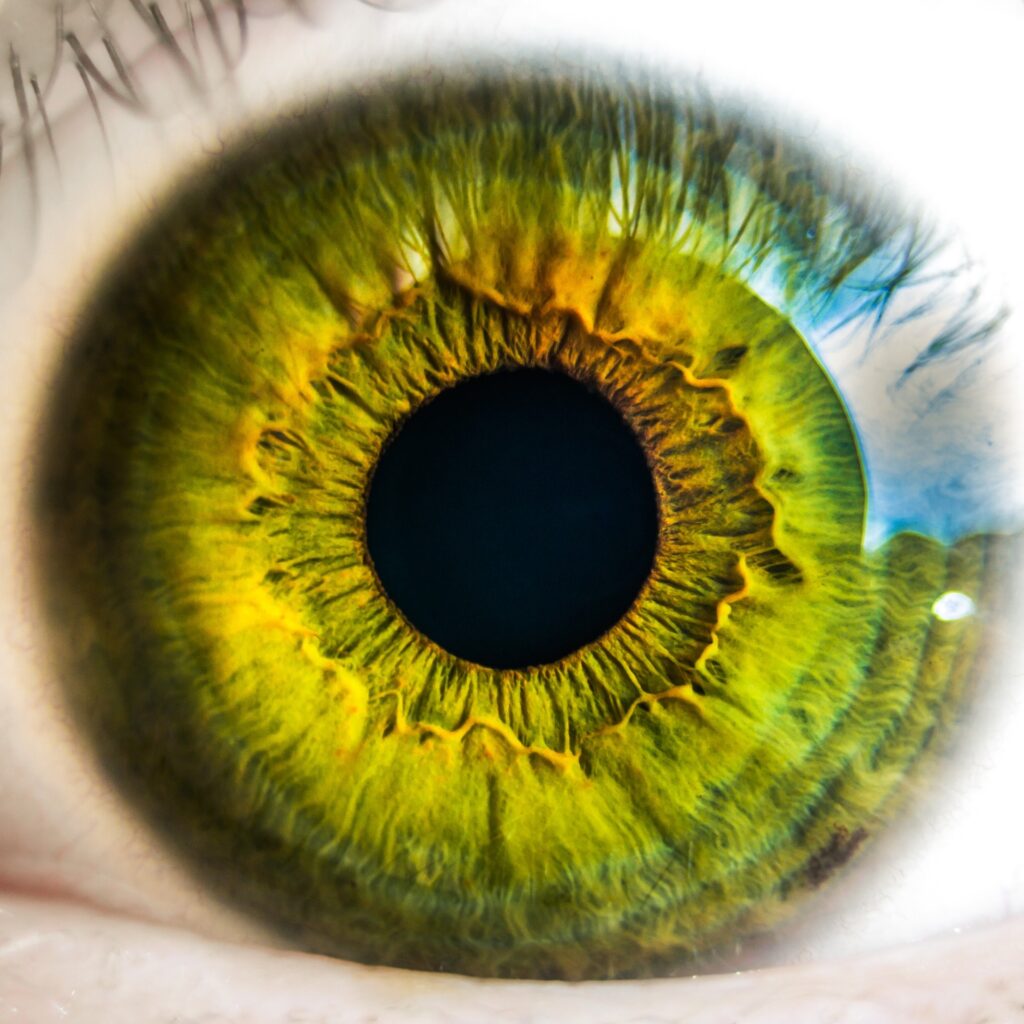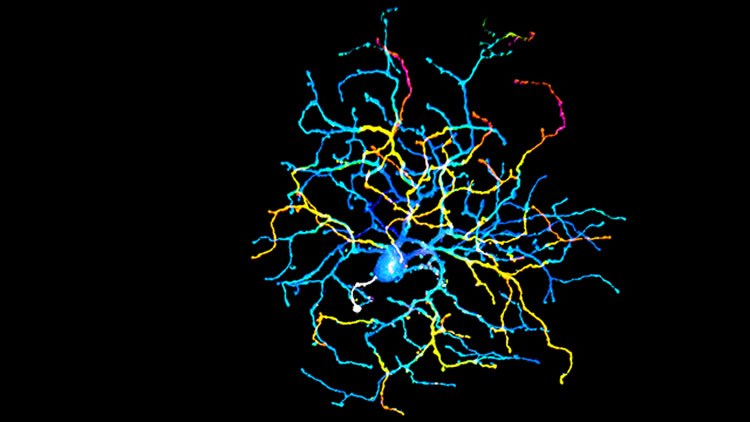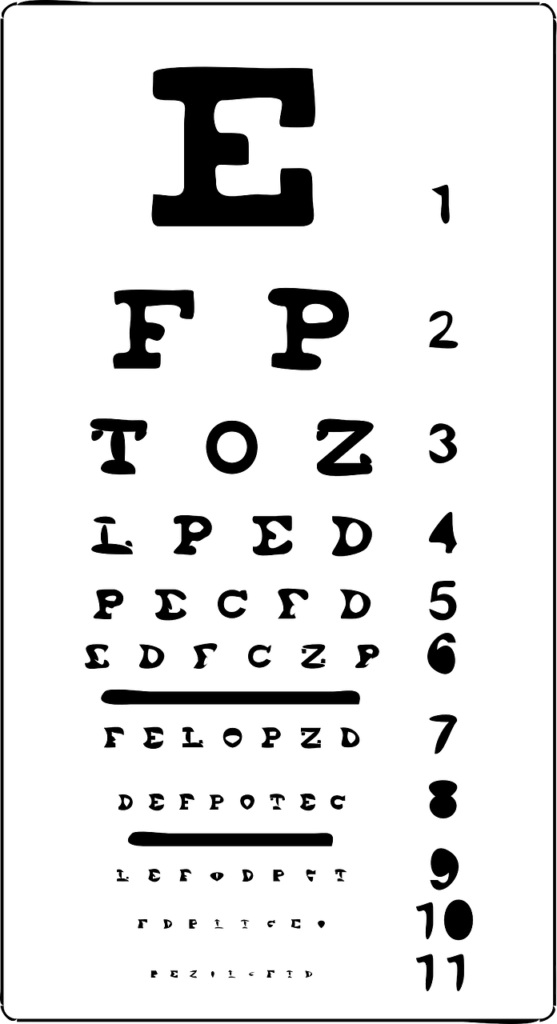 In the 21st century more and more children are experiencing problems with their sight – many more than 50 years ago. The myopia trend is most noticeable in East Asia – much of society in China and Korea suffers from myopia or has had their sight corrected. Why is this happening? Firstly – we are demanding more from our sight – modern life provides numerous visual incentives. The large mass of visual information that reaches our sight apparatus simply “overexerts” it. Secondly: we tend to forget about prevention and develop bad habits at home. We browse Facebook before going to sleep, read in diffused light, work at nights etc. Thirdly: omnipresent technology. It is present almost everywhere: at home, at school, in museums, in the city etc. Every child has their favourite cartoon – becomes a “TV worshipper” and once they know the “charm of Internet” they cannot live without it. They come across screens from an early age – this forces the sight to undergo extreme effort – looking at objects close up, e.g. fonts and images – and this makes the eyes become accustomed to “myopia” automatically. It can be explained using a simple example: when we stay in one position for long time, like when we are crouching and then we want to get back up, at the beginning we experience difficulties with getting back to the upright position. Why? Simply our muscles have gone numb and it is difficult for them to act normally. The same happens with the eyeball muscles which being in contraction for longer periods of time (forced to work close up) lose their flexibility, and it takes more time to “loosen up, dilate”. The elongated eye (i.e. the eyeball) does not move smoothly on the anterior – posterior axis. What does this have to do with clarity of sight? It is the eyeball muscles which are responsible for extending and shortening the eyeball and for focusing rays of light on the retina, where pictures are “read” by the visual centres in the brain. It is the correct functioning of the eyeball muscles which determines whether your child suffers from squint eye or other permanent visual disorders. Also, the number of hours spent outside has a direct impact on the appearance of myopia. The most common theory among ophthalmologists is that sunlight stimulates dopamine excretion, which blocks the eyeball from extending during its growth. Let’s look at this further, as the subject is very interesting!
In the 21st century more and more children are experiencing problems with their sight – many more than 50 years ago. The myopia trend is most noticeable in East Asia – much of society in China and Korea suffers from myopia or has had their sight corrected. Why is this happening? Firstly – we are demanding more from our sight – modern life provides numerous visual incentives. The large mass of visual information that reaches our sight apparatus simply “overexerts” it. Secondly: we tend to forget about prevention and develop bad habits at home. We browse Facebook before going to sleep, read in diffused light, work at nights etc. Thirdly: omnipresent technology. It is present almost everywhere: at home, at school, in museums, in the city etc. Every child has their favourite cartoon – becomes a “TV worshipper” and once they know the “charm of Internet” they cannot live without it. They come across screens from an early age – this forces the sight to undergo extreme effort – looking at objects close up, e.g. fonts and images – and this makes the eyes become accustomed to “myopia” automatically. It can be explained using a simple example: when we stay in one position for long time, like when we are crouching and then we want to get back up, at the beginning we experience difficulties with getting back to the upright position. Why? Simply our muscles have gone numb and it is difficult for them to act normally. The same happens with the eyeball muscles which being in contraction for longer periods of time (forced to work close up) lose their flexibility, and it takes more time to “loosen up, dilate”. The elongated eye (i.e. the eyeball) does not move smoothly on the anterior – posterior axis. What does this have to do with clarity of sight? It is the eyeball muscles which are responsible for extending and shortening the eyeball and for focusing rays of light on the retina, where pictures are “read” by the visual centres in the brain. It is the correct functioning of the eyeball muscles which determines whether your child suffers from squint eye or other permanent visual disorders. Also, the number of hours spent outside has a direct impact on the appearance of myopia. The most common theory among ophthalmologists is that sunlight stimulates dopamine excretion, which blocks the eyeball from extending during its growth. Let’s look at this further, as the subject is very interesting!
what-causes-myopia-exposure-to daylight

So how did our ancestors use their sight?

The evolution of the eye had ended long before print, electricity or TV appeared. Before it happened, our eye fulfilled its task on 6! Men were responsible for securing the well-being and nourishment of the family; a man was a hunter, a shepherd, a farmer or a soldier. He was supposed to be able to see well into the distance. Scientists claim that looking at things close up was useful in exceptional situations – which was not often, requiring muscle tension for only a short time and this was carried out without noticeable overload of the accommodation mechanism (accommodation – eye adjustment enabling us to see from different distances). Women were seamstresses (they weaved, embroidered), cooks and housewives, so they performed a lot of precise activities which engaged the sight close up. Despite this they didn’t complain about their eyes – their sight clarity was equally as good as the men’s.
what-causes-myopia-exposure-to daylight
Invention era: print and script – a challenge for eyesight
As soon as man acquired the ability of communicating thoughts in print and script, the eye faced a huge challenge. Initially, only a few people used the new inventions, but as time passed, more and more in society, in developed countries such as the United Kingdom, Germany and France, started learning reading and writing. Now, school is mandatory; the ability to read and write is a must if we are considering a good future for our child. At one time, books were very expensive and difficult to access – only elites could afford large collections of books, which were often placed in family libraries. These days we have public libraries and everybody has access to numerous books.

The invention of paper, made of cellulose, made mass printing possible. When we stopped using wax candles we were so astonished with artificial light that we spent more time on evening entertainment than our ancestors. Time once devoted to sleeping and relaxing is now designated for entertainment and filled with activities engaging our sight. A cherry of the top of this “sight revolution” was the appearance of black and white and then colour films.
what-causes-myopia-exposure-to daylight
Primitive man did not suffer any visual disorders at all and now almost every human being of age 21 or less and living in a civilized country complains about sight problems. Not to mention that every person at 40-50 years of age suffers from some kind of sight defect. Statistical data confirms the above facts.
The mechanism of the eyeball and changes to the shape of the lens
The eye has an amazing ability: accommodation. This concerns the focusing of rays of light on the retina. Light is reflected from objects seen at different distances away from the eye. It gives us the ability to see correctly close-up and at a distance. The eye will adjust depending on how far away a given object is:
what-causes-myopia-exposure-to daylight
When we look at objects close up the lens of the eye accentuates and the eye extends along the anterior – posteriori axis. When we look at distant objects the lens flattens and the eyeball shortens.
Does exposure to daylight have a significant impact on preventing myopia?
Definitely yes! Irrespective of effort or the type of physical activity, natural light has a significant influence on lowering the symptoms of myopia. If children (or adults) spend an equal amount of time in front of a screen as they do outside – the exposure to sunlight will be able to level out any harmful effects.
Recently, health recommendations in Singapore (and other countries in East Asia) have placed an emphasis on increasing the number of hours spent outside. It has been proved – after many tests conducted on groups of students, that there is a relationship between the amount of natural light reaching the eye and the symptoms of myopia.

what-causes-myopia-exposure-to daylight
Which muscles are responsible for eyeball movement?
There are six extraocular muscles: four recti and two oblique muscles. These muscles keep the eye in a stable position and any irregularity in the functioning of them can indicate problems with vision. Here is a list of the extraocular muscles:
– lateral rectus which draws off the eyeball (i.e. is responsible for sideways movement towards the temple),
– medial rectus which adducts the eyeball (i.e. is responsible for movement towards the nose),
– superior rectus which moves the eyeball up but also adducts it and intorts it (i.e. turns the vertical eye meridian towards the nose),
– inferior rectus which causes interior eyeball movement (down) but also adducts it and extorts it (i.e. turns the vertical eye meridian towards the temple),
– superior oblique causes upward eye movement but also adducts it and intorts it,
– inferior oblique causes downward eye movement but also adducts it and extorts it.
what-causes-myopia-exposure-to daylight
What does it mean to be “myopic”? What it is?
A myopic person sees objects located close to them very clearly. A characteristic for a myopic person is squinting their eyes in order to improve the clarity of vision when they look at objects located in the distance. Distant objects are seen as unclear due to the fact that the eyeball is too long and the lens too convex.
Our eyeballs grow mainly during adolescence, so the first symptoms of sight deterioration may be noticeable at school age. A child who is myopic has no problem reading text when it is placed close to their eyes, but they cannot make out the number of a bus which is some distance away. In the case of myopia the eyeball is extended along the anterior – posterior axis. With this defect, rays of light reflected from objects are focused on the retina.
Myopia is corrected with “dispersing glasses” (minus ones), which disperse the rays of light reaching the eye from objects in the distance. Myopia up to -3 dioptric is rated small (school age); from -3 up to -6 dioptric is average. Usually myopia deepens until eye growth is completed, i.e. approx. age 21.
what-causes-myopia-exposure-to daylight

What are the causes of myopia?
Too powerful optic system or elongated eyeball *.
The risk factors are long hours spent in front of the TV, PC, tablet or smartphone.
The latest research shows that a worsening in vision clarity is related to the fact that too much time is spent in rooms with artificial light. What is curious is that exposure to sunlight has a significant influence on eyeball growth in children.
*Eyeball growth in childhood must be stopped at the correct stage. Retina cells are responsible for this growth process. Limited natural light exposure causes disorders in the functioning of these cells and the eye does not stop growing. And myopia increases.
what-causes-myopia-exposure-to daylight
What is the most probable cause of the appearance of myopia at the cellular level?
(2017) Recent discovery: Cells responsible for myopia are located in the retina of the eye. Tests make it possible to determine which cells in the retina are responsible for myopia.
There are approximately 50 types of gyral cells responsible for gathering and passing information used for visual world perception. Each of these cells receives different information – such as colour or movement etc.
New research shows that retina cells – which are extremely sensitive to light – control how the eye grows and develops. If the eye grows for too long, pictures are not focused on the retina, causing myopia. We have known for a long time that the retina contains the “signal which focuses the picture in the eye” and that it is important for the correct regulation of the growth of children’s eyes. Fortunately, we have found a key connecter – it is the cell that actually performs this task and the neural circuit that makes this visual function possible. The cell is named: “ON Delayed”. It is extremely sensitive to light. Dr Schwartz, the initiator of the test and co-author of the project reminds us: “the eye must be stopped from growing at exactly the right stage of childhood”.
Doctor Schwartz described the neural circuit in a diagram which shows how this particular cell is connected to other cells in the retina. You can see what this cell and its dendrite structure look like – and how they “communicate”.
(Photo: Northwestern University):

what-causes-myopia-exposure-to daylight
How does artificial light act on this cell?
The spectrum of artificial light (inside buildings) is characterised with high red/green contrast, which activates the group of photoreceptors in human eye. This excessive stimulation of cells – exceptionally sensitive to this contrast – results in excessive eyeball growth, and as a consequence, myopia appears.
Schwartz’s research is financed by the National Institutes of Health (NIH). The next stage is to find the cell’s gen. When they succeed they will be only a step away from the possibility of completely curing myopia. Dr Schwartz wants to identify new cells according to their specific function, analyse their genetic signatures and understand how they are connected within the retina and brain centres. His research may be a breakthrough in gene therapy and in curing blindness!
Source: Marla Paul – Northwestern University
Image Source: This NeuroscienceNews.com image is credited to the researchers/Northwestern University.
what-causes-myopia-exposure-to daylight

How much time should your child spend outdoors?
It is recommended for a child to spend at least two hours daily exposed to natural light (daylight). Two hours a day outside (daylight exposal) stops the development of myopia.
ATTENTION! Children who during first years of life sleep with night lamps turned on are five times more likely to be affected by myopia!
What are the methods of myopia treatment?
The defect is corrected with a dispersed lens. The power of such lenses is measured in diopter – with a minus (-) sign. Patients wear special glasses, contact lenses or ortholens. These are all non-surgical methods. Ortholenses are adjusted to the size of the patient’s eyeball, and when worn at night, the retina flattens, and thanks to this the myopic person definitely sees better during the day. The effect depends on the eye parameters and the degree to which the defect has developed. Ophthalmologists recommend them to children over 10 (when adolescence starts) as this is the time in which myopia often develops.
what-causes-myopia-exposure-to daylight
NWhat is so-called high axial myopia?
It’s a creeping, degenerative eye illness with a genetic background. In the case of this disease, the defect amounts to more than -6 diopter reaching even a dozen or so diopter. This defect appears and deepens as a result of excessive stretching of eye length and causes conjunctiva damage.
We start testing eye defects
You can find out more about our eye testing methods and how we check for visual defects on our main website (scroll down a little): www.zobaczycjutro.org. See you!

what-causes-myopia-exposure-to daylight


Najnowsze komentarze